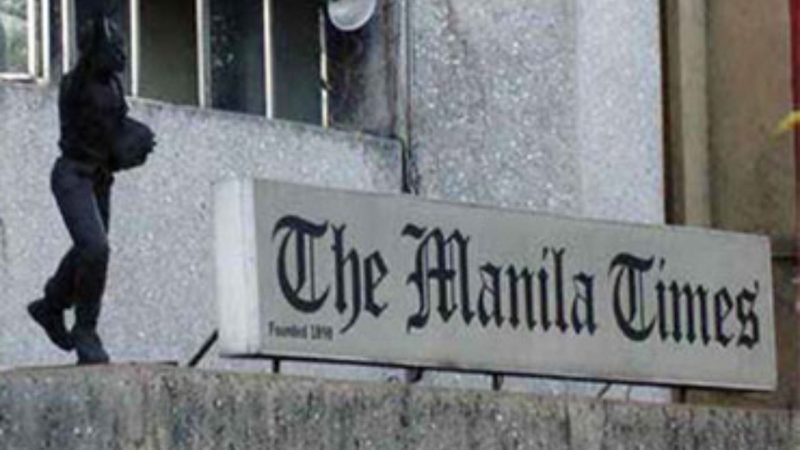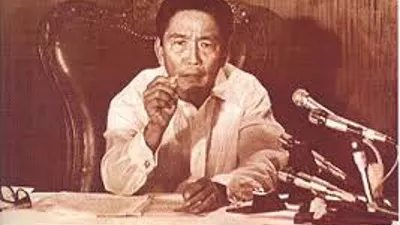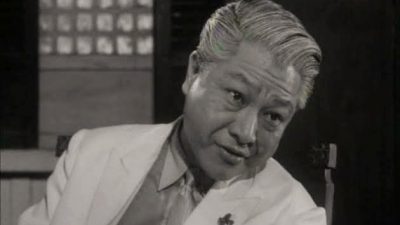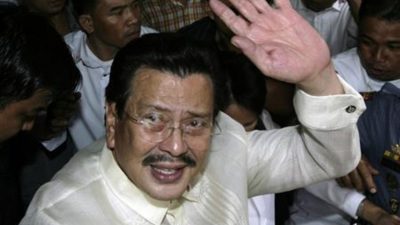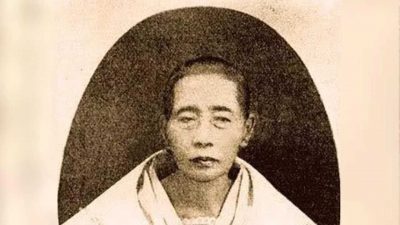On October 11, 1898, The Manila Times, the first daily newspaper in the Philippines, was founded by Thomas Gowan.
The Manila Times was published to meet the demand of an American paper in Manila, demand mainly from men of the United States Army who had occupied Manila.
The newspaper was founded shortly after the news that the Treaty of Paris would be signed, ending the Spanish-American War and transferring the Philippines from Spanish to American sovereignty. The treaty of Paris was signed on December 10, 1898.
Gowan hired a small printing press, Chofre y Compania, to put up the paper. The printing press was located on Calle Alix, now Legarda Street, in Sampaloc, Manila. The paper, however, had a downtown office on the Escolta.
The first issue of The Manila Times had a sheet of two leaves, or four pages, measuring about 12 by 8 inches, each page divided into two columns. The first editorial read:
“Since the United States forces have been in the Philippines, there has been a keen demand for an American newspaper here with a daily supply of American news. Several schemes have been talked about, but we have come to nothing. We have not talked about The Manila Times but we have been working, and hoped to complete the arrangements in a few days. Now we have the news of such importance that we feel compelled to publish it promptly, instead of holding it back until completion of our plans. The Manila public will readily see that news in this issue [is] of such a nature as to demand immediate publication, and to excuse defects in the manner of publishing. What The manila times lacks in quantity, it makes up in quality, today at any rate. We have made arrangements for a daily service of telegrams from the United States, and we undertake to continue that as long as the public desires. We cannot guarantee to provide as great a piece of news each day as we give today, for Paris Conferences do not sit often, and the United States does not acquire territories every day.”
Before The Manila Times was born, several native newspaper were already in existence in the Philippines written in Spanish, and most of them were nationalistic and revolutionary.
In 1899, Gowan sold The Manila Times to George Sellner, who at that time was its business manager. Sellner would later sell the Times to a group of American businessmen in 1902 but reacquired it three years later. Again, in 1907 Sellner sold the paper to Thomas C. Kinney, who incorporated the Times Co., with a board of directors composed of American and British businessmen. During this period R. McCulloch Dick, a British sailor who came to Manila with the United States Navy and had some newspaper experience, was appointed editor of The Manila Times. Dick later acquired the Philippines Free Press, a weekly founded by Judge W.H. Kincaid in 1907.
On July 25, 1914, The Manila Times moved from the Escolta to its new offices at the Cosmopolitan Building, formerly the Metropolitan Hotel. With its transfer to a new site the Times modernized its equipment, getting Linotypes of the latest models, the only ones of their kind then in the Orient. The use of the new machinery necessitated laying off 27 of the 35 printers, mostly hand typesetters, who had been with the paper since its founding some 16 years earlier.
In 1918 the Filipino employees of The Manila Times called an all-out strike. The Filipino press had accused the Times of misrepresenting the Filipinos in order to prejudice the minds of a party of American Congressmen, which was then about to visit the Philippines, against granting of independence. Smarting from the attempts at misrepresentation, the reporters and printers of the paper, who were all Filipinos, declared a general walkout.
Carlos P. Romulo, then a Times reporter, was reported to be the leader of the strike, but the belief had gained credence at the time that the movement had been inspired by Manuel L. Quezon and other Filipino political leaders. The belief was later supported by two salient facts:
Some of the strikers were given temporary jobs in the office of Senate President Quezon, and
The purchase by Quezon himself of The Manila Times. Not long after the strike Romulo became one of the secretaries of Quezon, together with an aspiring young politician named Elpidio Quirino.
In association with a group of Filipino businessmen Quezon bought The Manila Times lock, stock and barrel. He wanted a militant Filipino organ of public opinion, and he thought that the Times would suit his purpose. Under his ownership the paper was staffed mostly by Filipinos. This followed the pattern set by his close friend, Governor-General Francis Burton Harrison, of Filipinizing the government.
Quezon, realizing that publishing and politics did not mix well, sold the Times to George H. Fairchild in 1921. Fairchild, a former Hawaiian senator, was then engaged in promoting the Philippine sugar industry. The new owner supervised the business as well as the editorial policies of the paper, and was naturally partial to news bearing on the sugar industry. The paper under Fairchild was generally believed to have become intensely pro-American and anti-Filipino in its politics. It took on the role of spokesman for American business and politics in the Philippines.
In 1926 Fairchild sold The Times to Jacob Rosenthal, a businessman who was engaged in the importation and manufacture of shoes.
On December 10, 1928, the Cosmopolitan Building, in which the Times had been housed for nearly two decades, burned down. Rosenthal, who had learned to consider the paper a sort of white elephant, gladly collected the insurance and sold the paper’s name and goodwill to the Tribune-Vanguardia-Taliba (T-V-T) papers through D.H. Thibault, general manager of the T-V-T publications of Don Alejandro Roces Sr.
On February 15, 1930, Thibault announced that The Manila Times would discontinue publication on March 15, 1930. On March 14 the Times’ “Swan Song” editorial appeared. On that date The Times closed after an uninterrupted existence of nearly 32 years, which covered a period of great political changes not only in the Philippines but throughout the Far East.
The second epoch in the history of The Manila Times began 15 years after its discontinuance in 1930. When Second World War was still in its mopping-up stage, the heirs of Don Alejandro Roces Sr., who died during the Japanese occupation along with his eldest son Alejandro Jr., met together and decided to revive the business their father had founded. The printing plant of one of them had not been destroyed by the war. A newspaper could be printed there if newsprint were available. Accordingly, arrangements were made for a supply of newsprint.
In the meantime, the owners of the paper dropped the T-V-T name and formed a corporation under the title of “The Manila Times Publishing Co., Inc.”
The first issue of the paper on May 27, 1945, carried the name “The Sunday Times”, and it was only a small folded sheet of the ordinary tabloid size reminiscent of the dimensions of the first issue of The Manila Times on October 11, 1898. Then as The Times approached normalcy The Sunday Times increased its pages. In the meantime the circulation was getting larger, and it became evident that The Sunday Times alone would not adequately supply the demand of the reading public. So on September 5, 1945, the first daily issue of The Manila Times reappeared on the streets of Manila.
Among the first staff members of the postwar Times were Jose P. Bautista, prewar editor of The Tribune, Jose Luna Castro and Emilio Aguilar Cruz, staff members of the prewar Graphic, Vicente J. Guzman, formerly of the Bulletin staff, Luis Serrano, Crispin Gonzales, Anatolio Litonjua, Andres B. Callanta, Jose L. Guevara, Benjamin Osias and Zosimo Resurreccion. Among those who served as society editor were Jim Austria, Carole Guerrero, Rosario Delgado, Jovita Rodas, Estrella Alfon, Cita Trinidad and Consuelo G. Abaya.
Later a teenager joined the Times as a cub reporter, covering the police and miscellaneous beats. He made such a good showing that the editor of the paper decided to send him to Korea as its correspondent. His dispatches from the Korean battlefront were quite creditable, coming as they did from the actual firing line assigned to the Filipino contingent. He was wounded in Korea and had to be sent back to the Philippines. He was later assigned to the army beat.
This young man was Benigno Aquino Jr.
Another Times staffer who attained eminence in public life was Mrs. Maria Kalaw-Katigbak. She was a columnist of the paper before she went into politics. Her column was highly appreciated by the reading public, especially by women whose views and opinions generally found expression in the column.
When President Ferdinand Marcos imposed martial law throughout the country, The Manila Times was one of the media organizations closed down by the authoritarian government. It was to remain closed down for the next 14 years. During the Martial Law era, its presses printed issues of The Times Journal, carrying the same format but focused much on the events related and accepted by the Marcos administration. The Times Journal was then under the patronage of the government, using the Manila Times buildings and machinery as theirs.
On February 5, 1986, days before Edsa I that ousted Marcos, the Roces family (the Ramon Roces group) revived The Manila Times, but 3 years after its rebirth, the Roces family, citing financial death, sold the paper to the business tycoon John Gokongwei.
During the Joseph Estrada presidency, The Manila Times was sued over a published story calling the former movie actor an “unwitting godfather” to a supposed fraudulent deal, for P101 million. Terrorized by Estrada’s wrath, the Gokongweis were forced to apologize to stop him from harassing them on their alleged tax problems. The printed apology prompted Estrada to withdraw the libel case. The Times publisher Ermin Garcia Jr. pointed out that the paper did not retract the story that drew Estrada’s ire.
On July 23, 1999, The Manila Times closed up. The 180 employees of the Times mourned the demise of the paper which had been critical of the Estrada administration. In an earlier interview, the editor in chief, Malou Mangahas, said the purchase of the paper by a group headed by the businessman Reghis Romero III was part of an effort to stifle newspapers that were critical of the government.
Months before the Times’ closure, Mark Jimenez, a close associate of Estrada’s, expressed interest in buying the newspaper, but wanted his ownership to remain undisclosed. Jimenez’s wish to be an unidentified buyer would be granted. From October 11 until November, the Times was operating under its supposed owner, Reghis Romero, who reportedly fronted on Jimenez’s behalf. However, in the months to follow, disclosures from within Estrada’s inner circle revealed that Jimenez had indeed bought The Manila Times.
On August 8, 2001, Jimenez sold Times to Dante A. Ang.
Today, The Manila Times serves as one of largest newspaper in the Philippines in terms of circulation.
Sources:
Philippine News Agency archives
The Manila Times, Project Gutenberg Self Publishing Press
(Filed by JR AMIGO/ai/mnm)

